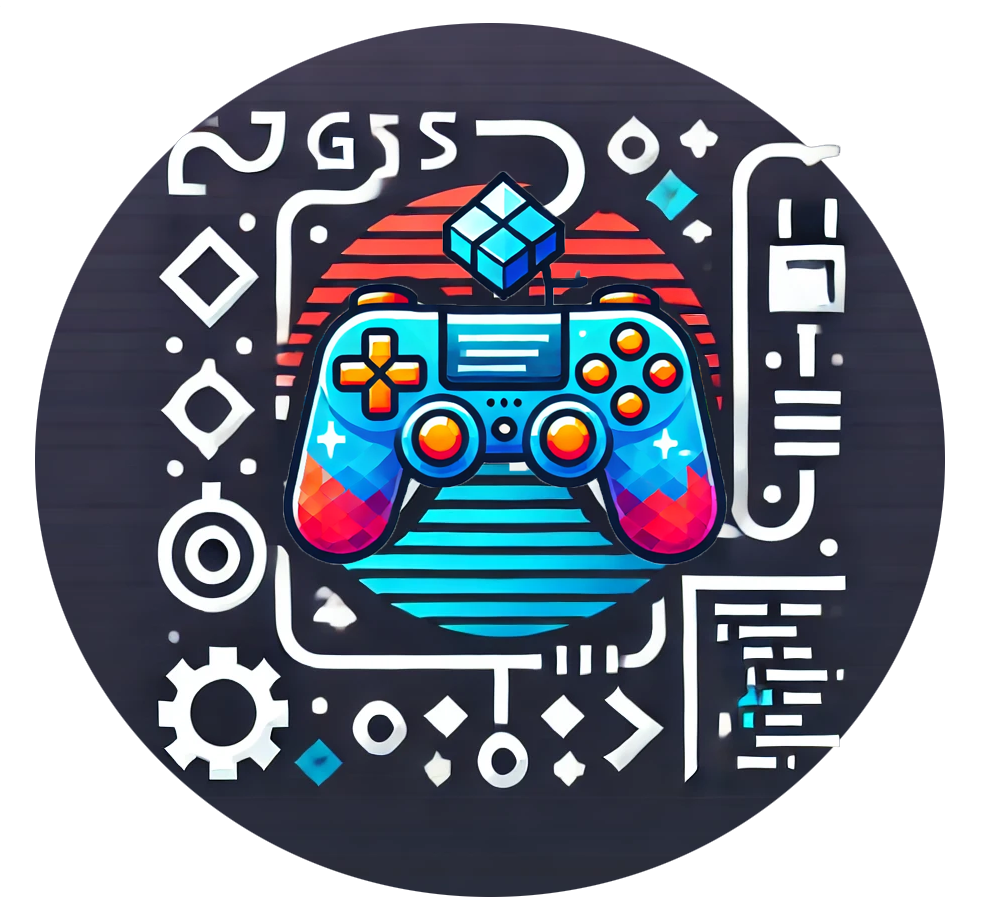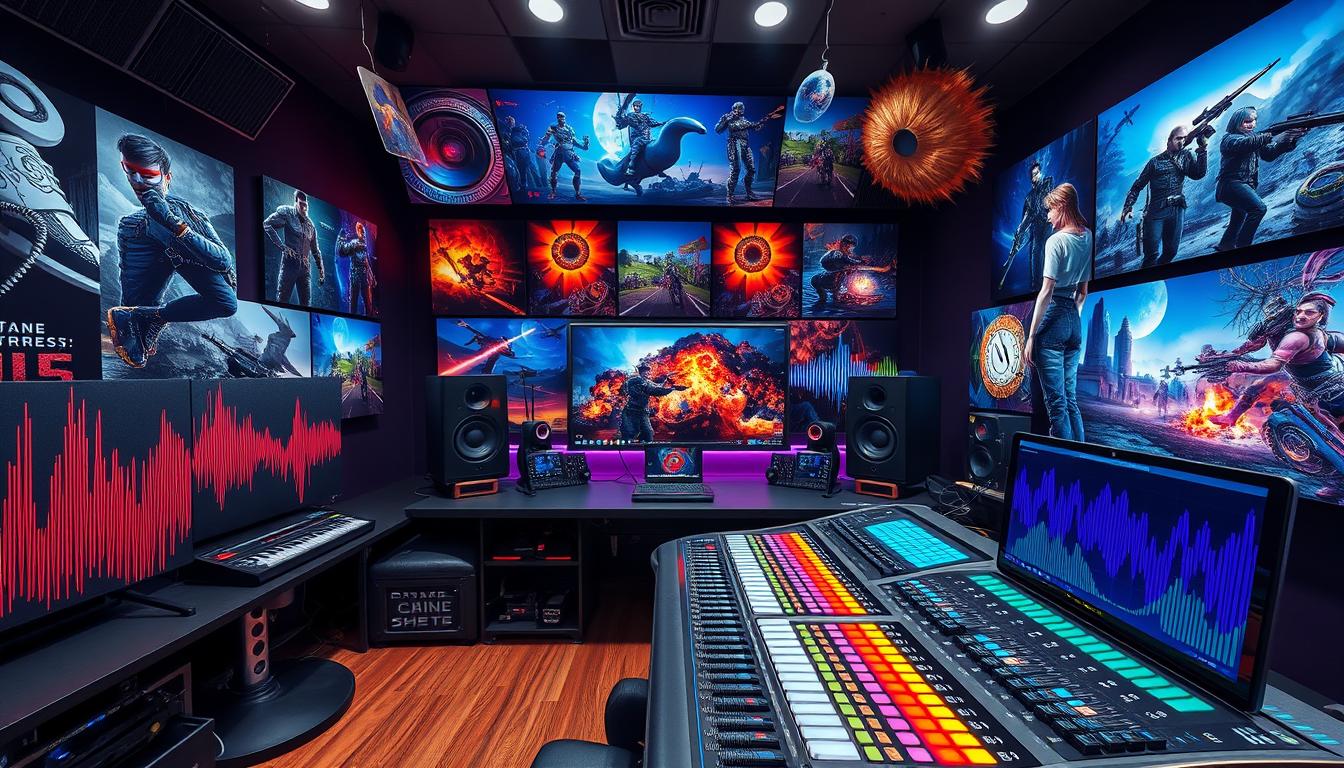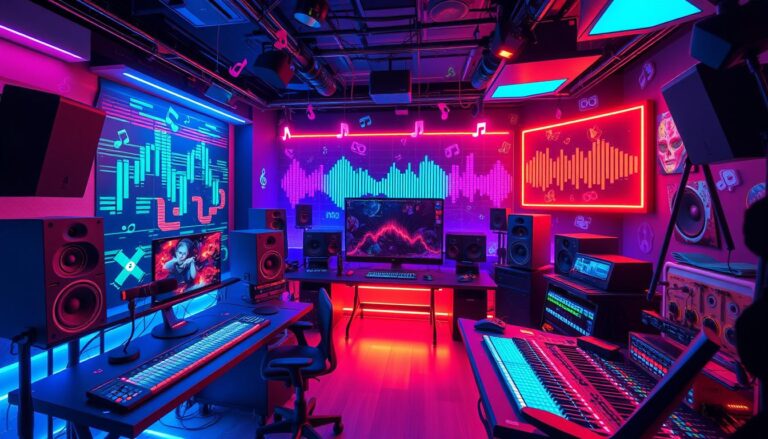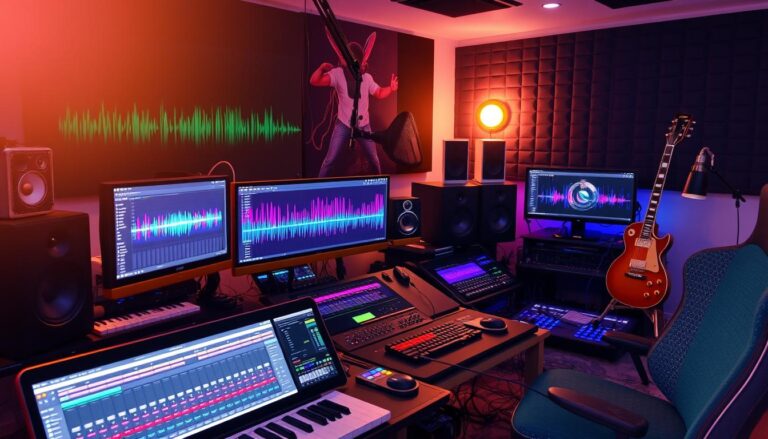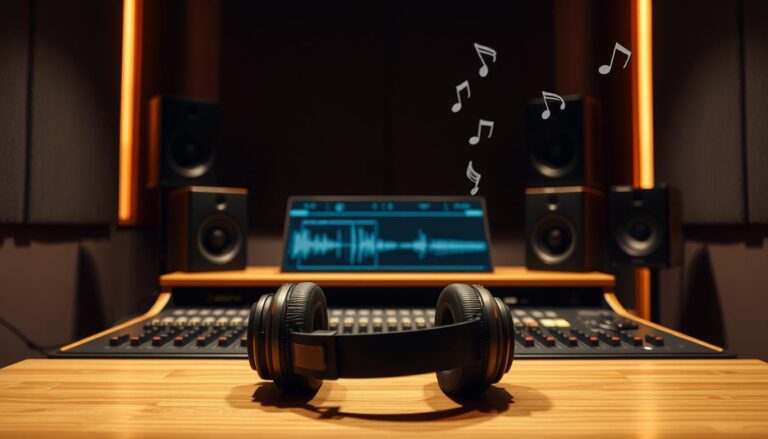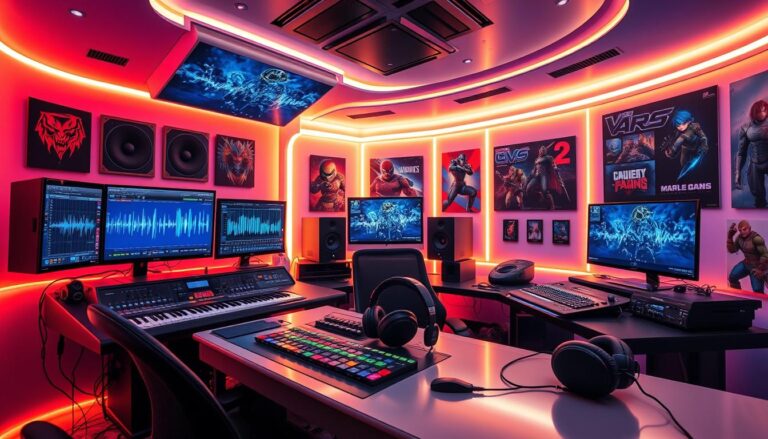How Do You Balance Sound Levels Across a Game?
Balancing sound levels in games is key to a great gaming experience. It means setting the right volume levels and making sure the sound is good on all devices. By doing this, game developers can make sure the game sounds good everywhere.
They also make sure the loud and soft sounds are just right. This includes the background music and how it fits with the game. It’s all about creating a balanced audio environment that makes the game better.
Getting the sound right is important to avoid problems like too loud or too quiet sounds. This can ruin the fun of playing the game. Sound Design and Audio Effects play a big role in making sure the sound is just right.
By balancing the different sounds, developers can make a game that feels real and fun. This balance makes the game’s visuals and sounds work together perfectly.
Sound balancing in games is a complex task. But it’s essential for a great audio experience. By understanding how to manage sound levels, developers can make games that are fun to play and listen to.
Understanding Sound Level Fundamentals in Gaming
In the world of audio programming, making immersive soundscapes is key in game development. Developers must think about sound level basics to create a balanced audio experience in games.
Volume Control Systems and Parameters
Good volume control is vital for keeping sound levels steady in games. Developers need to consider speaker setups, computer volume settings, and in-game controls. This ensures players can adjust audio to their liking without affecting the game’s sound.
Digital Audio Measurements and Standards
Following digital audio standards is important for sound quality on different devices. Knowing about decibels (dB) and peak/RMS levels helps developers meet quality standards. This ensures the audio sounds great on any platform.
Cross-Platform Audio Considerations
Game developers face challenges with cross-platform audio. They must understand each platform’s audio capabilities and how to integrate them. This work helps create a seamless audio experience, making games more immersive.
| Audio Measurement | Description | Relevance in Gaming |
|---|---|---|
| Decibels (dB) | A logarithmic unit used to measure the intensity or level of sound. | Crucial for setting appropriate volume levels and ensuring a balanced audio mix across various game elements. |
| Peak Level | The maximum or highest amplitude of a sound wave. | Helps prevent clipping and distortion, ensuring high-quality audio playback. |
| RMS (Root Mean Square) Level | A measure of the average or effective level of a sound wave. | Useful for balancing the overall perceived volume of different audio components in a game. |
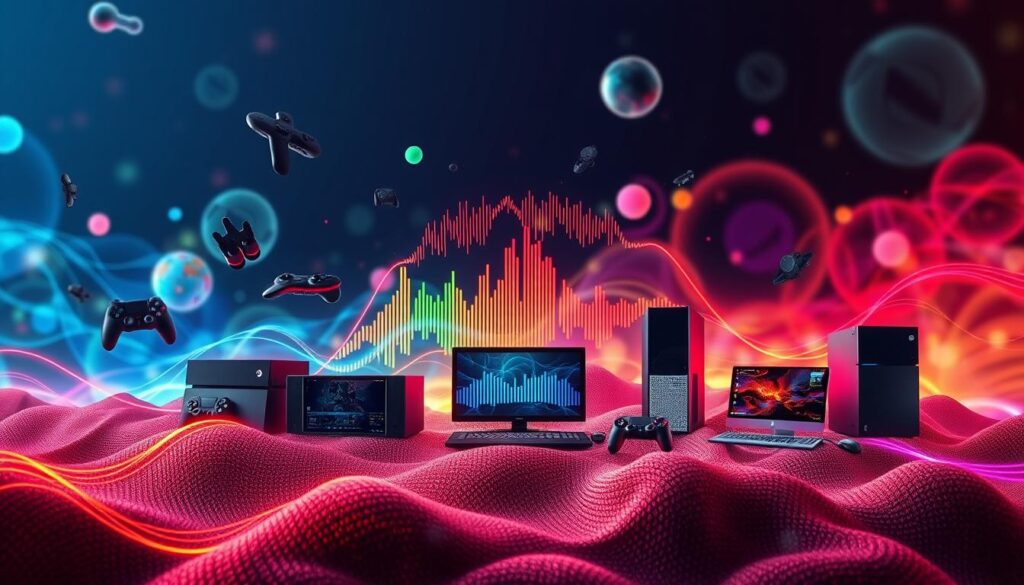
Game Sound Design and Audio Effects Basics
In video game development, sound design is key to a great gaming experience. Sounds like a dragon’s roar or a creaking floorboard add to the game’s feel. They help players feel like they’re really there.
Foley artistry and dialogue recording are at the core of sound design. Sound designers mix these with music and ambient sounds. They aim to make the game’s audio fit perfectly with what players see and hear.
Game sound designers face a big challenge. Unlike movies, games change with each play. They need to make sure sounds fit the game’s actions and the player’s choices. This means knowing how to use audio well in the game.
To make games sound amazing, designers use many techniques. They use tools like FMOD or Wwise to change sounds on the fly. This keeps the game’s audio exciting and in sync with what’s happening.
Sound design is very important in games. It can make players feel more connected to the game world. Sounds like a car engine or spooky music can make a game unforgettable.
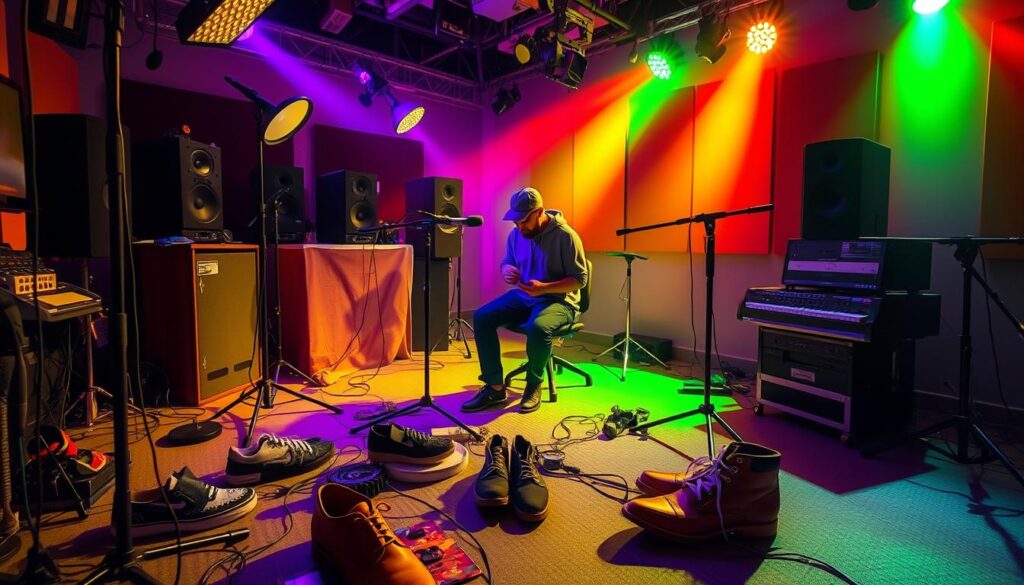
Establishing Maximum Volume Thresholds
In the world of game audio, setting volume limits is key. It helps keep audio levels the same in all games and media. This means setting a standard, comparing it to others, and making sure all sounds are balanced.
Setting Reference Levels
Developers need to set levels for the loudest sounds in games. This helps keep all sounds clear and impactful. It ensures the game’s audio is cohesive and engaging.
Comparing with Industry Standards
After setting these levels, it’s important to check them against industry standards. This makes sure the game’s audio meets professional expectations. It keeps volume levels consistent and pleasing to players and critics.
Volume Normalization Techniques
- Using volume normalization, like peak or RMS-based, helps keep all sounds at a consistent level.
- This method ensures loud sounds have the right impact without overwhelming other sounds. It makes the audio experience rich and immersive.
By setting volume limits, establishing reference levels, and using normalization, game audio teams can create a top-notch audio experience. This enhances gameplay and improves the player’s overall experience.
Audio Mixing and Dynamic Range Control
In gaming, audio mixing is key. It balances music, sound effects, and dialogue. Programmers use techniques like compression to keep sound levels right.
Good audio mixing makes all sounds clear. It keeps the game exciting without hurting your ears. Knowing how to manage sound levels is crucial for a great game audio experience.
Mastering Audio for Games
Mastering audio is a big part of mixing. Professionals use EQ, compression, and more to fine-tune sound. This makes sure the audio sounds great on any device.
Spatial Audio and Dynamic Mixing
Spatial effects and transitions make games more real. Sound engineers use these to make the audio fit the game’s story and action. This makes the game feel more alive.
Prioritizing Sound Elements
Sound engineers must pick the right sounds to keep players interested. They plan carefully to make sure important sounds are heard. This makes the game’s audio and visuals work together well.
| Technique | Percentage of Usage | Key Benefits |
|---|---|---|
| Adjusting EQ and Filtering | 79% | Boost key frequencies and create a balanced, dynamic mix |
| Incorporating Spatial Effects and Transitions | 91% | Enhance immersive experience and align audio with game narrative and player actions |
| Mastering Audio for Different Platforms | 74% | Optimize audio for various devices and ensure consistent, high-quality sound |
Game audio pros use audio programming and interactive audio to make games sound amazing. They create a world that pulls you in and makes the game better.
Background Music Integration and Balance
In game music composition, blending background music with other sounds is key. Developers aim to balance music with sound effects, ambient noise, and dialogue. This balance creates an immersive soundscape that makes the game more enjoyable.
Music Ducking Techniques
Music ducking is a crucial technique. It lowers the music volume when sound effects or dialogue are important. This ensures the audio stays balanced and clear, without any one thing overpowering the others.
Ambient Sound Layering
Ambient sounds are also essential in game music. By adding sounds like leaves rustling or machinery humming, developers create a deep, immersive world. This adds realism and depth to the game’s audio.
Interactive Music Systems
New game audio tech brings interactive music systems. These systems change the soundtrack based on player actions and game events. This makes the music feel more connected to the player’s actions, enhancing their experience.
By using these techniques, developers can mix music, ambient sounds, and interactive audio. This creates a rich, engaging immersive soundscape that boosts the player’s enjoyment.
Sound Effect Prioritization Strategies
It’s key to pick the right sound effects for a game’s audio. We need to figure out which sounds are most important for the game. Then, we make sure these sounds are heard clearly, even when there’s a lot going on.
Using techniques like ducking less important sounds helps. This way, we keep the focus on the sounds that matter most. This lets players hear the important feedback and feel more immersed in the game.
Sound effect prioritization makes the game audio better and more fun. It helps the player feel like they’re part of the game. By managing sound effects well, designers can make sure the game’s sounds work together with the visuals and gameplay.
Getting good at sound effect prioritization takes a lot of knowledge and planning. It’s about knowing what sounds are most important and making smart choices. This might mean layering sounds, using special triggers, or adjusting volumes to keep the key sounds clear.
